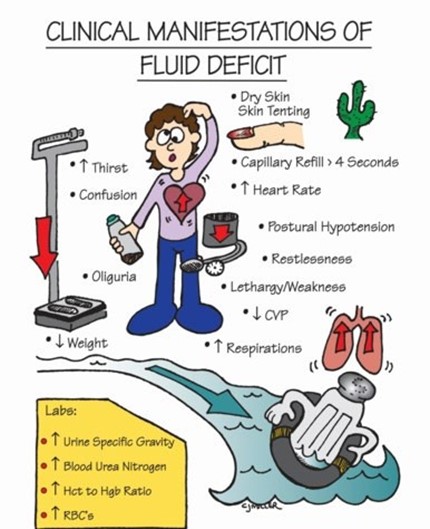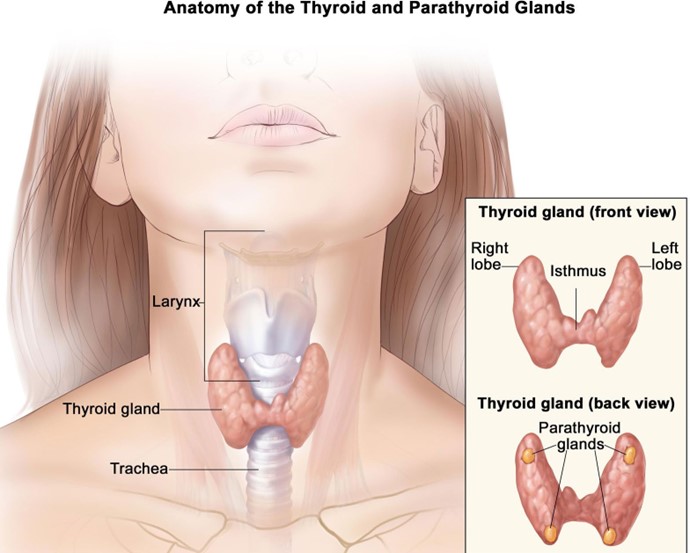A nurse is reviewing the laboratory results of a client who has fluid volume deficit. The nurse would expect which of the following findings?
Sodium 155 mEq/L
Hematocrit 44%
Urine specific gravity 1.035
BUN 19 mg/dL
The Correct Answer is C
Choice A: Sodium 155 mEq/L is correct because it indicates hypernatremia, or high sodium level, which can occur in fluid volume deficit due to dehydration, excessive sweating, or diuretic therapy. Sodium is an electrolyte that regulates fluid balance and osmotic pressure in the body. The normal range of sodium is 135 to 145 mEq/L.
Choice B: Hematocrit 44% is incorrect because it is within the normal range of hematocrit, which is the percentage of red blood cells in the blood. Hematocrit can reflect the oxygen-carrying capacity and viscosity of the blood. The normal range of hematocrit is 37% to 47% for females and 42% to 52% for males.
Choice C: Urine specific gravity 1.035 is correct because it indicates a high urine concentration, which can occur in fluid volume deficit due to decreased urine output and increased solute excretion. Urine specific gravity is a measure of the density of urine compared to water. The normal range of urine specific gravity is 1.005 to 1.030.
Choice D: BUN 19 mg/dL is incorrect because it is within the normal range of BUN, which stands for blood urea nitrogen, and is a measure of the amount of nitrogen in the blood that comes from urea, a waste product of protein metabolism. BUN can reflect the kidney function and hydration status of the client. The normal range of BUN is 7 to 20 mg/dL.

Nursing Test Bank
Naxlex Comprehensive Predictor Exams
Related Questions
Correct Answer is C
Explanation
Choice A: Hypertension is incorrect because it is not a common complication of hypocalcemia, which is a low level of calcium in the blood. Hypertension, or high blood pressure, can be caused by conditions such as kidney disease, diabetes, or preeclampsia.
Choice B: Drug toxicity is incorrect because it is not directly related to hypocalcemia, although some drugs can affect the calcium level in the blood. For example, loop diuretics can increase the urinary excretion of calcium, while bisphosphonates can inhibit the bone resorption of calcium.
Choice C: Other electrolyte disturbances is correct because hypocalcemia can be associated with other imbalances of electrolytes, such as magnesium, phosphorus, and potassium. For example, hypomagnesemia, or low magnesium level, can impair the secretion and action of parathyroid hormone, which regulates calcium balance.
Hyperphosphatemia, or high phosphorus level, can bind to calcium and lower its availability in the blood. Hypokalemia, or low potassium level, can increase the renal excretion of calcium.
Choice D: Visual disturbances is incorrect because it is not a typical manifestation of hypocalcemia, although severe hypocalcemia can affect the nervous system and cause confusion, hallucinations, or seizures. Visual disturbances can be caused by conditions such as glaucoma, macular degeneration, or diabetic retinopathy.

Correct Answer is ["A","C","D"]
Explanation
Choice A: Contraction of the facial muscle is correct because it indicates a positive Chvostek's sign, which is a sign of hypocalcemia, or low calcium level in the blood. Chvostek's sign is elicited by tapping the facial nerve in front of the ear and observing for twitching of the facial muscles on the same side.
Choice B: Asked when the foot numbness would go away is incorrect because it is not a specific sign of hypocalcemia, although it can indicate peripheral neuropathy, which can be caused by various conditions such as diabetes, vitamin B12 deficiency, or alcohol abuse.
Choice C: Carpal spasm with blood pressure measurement is correct because it indicates a positive Trousseau's sign, which is another sign of hypocalcemia. Trousseau's sign is elicited by inflating a blood pressure cuff on the upper arm and observing for flexion of the wrist and fingers.
Choice D: Complaints of fingers tingling is correct because it indicates paresthesia, which is a sensation of numbness, tingling, or prickling in the extremities. Paresthesia can be caused by hypocalcemia, as low calcium level can affect the nerve conduction and excitability.
Choice E: Heart rate 88 and regular is incorrect because it is within the normal range of heart rate, which is 60 to 100 beats per minute. Heart rate can be affected by hypocalcemia, but usually in the opposite direction, causing bradycardia, or slow heart rate, or cardiac arrhythmias, or irregular heartbeats.

Whether you are a student looking to ace your exams or a practicing nurse seeking to enhance your expertise , our nursing education contents will empower you with the confidence and competence to make a difference in the lives of patients and become a respected leader in the healthcare field.
Visit Naxlex, invest in your future and unlock endless possibilities with our unparalleled nursing education contents today
Report Wrong Answer on the Current Question
Do you disagree with the answer? If yes, what is your expected answer? Explain.
Kindly be descriptive with the issue you are facing.
